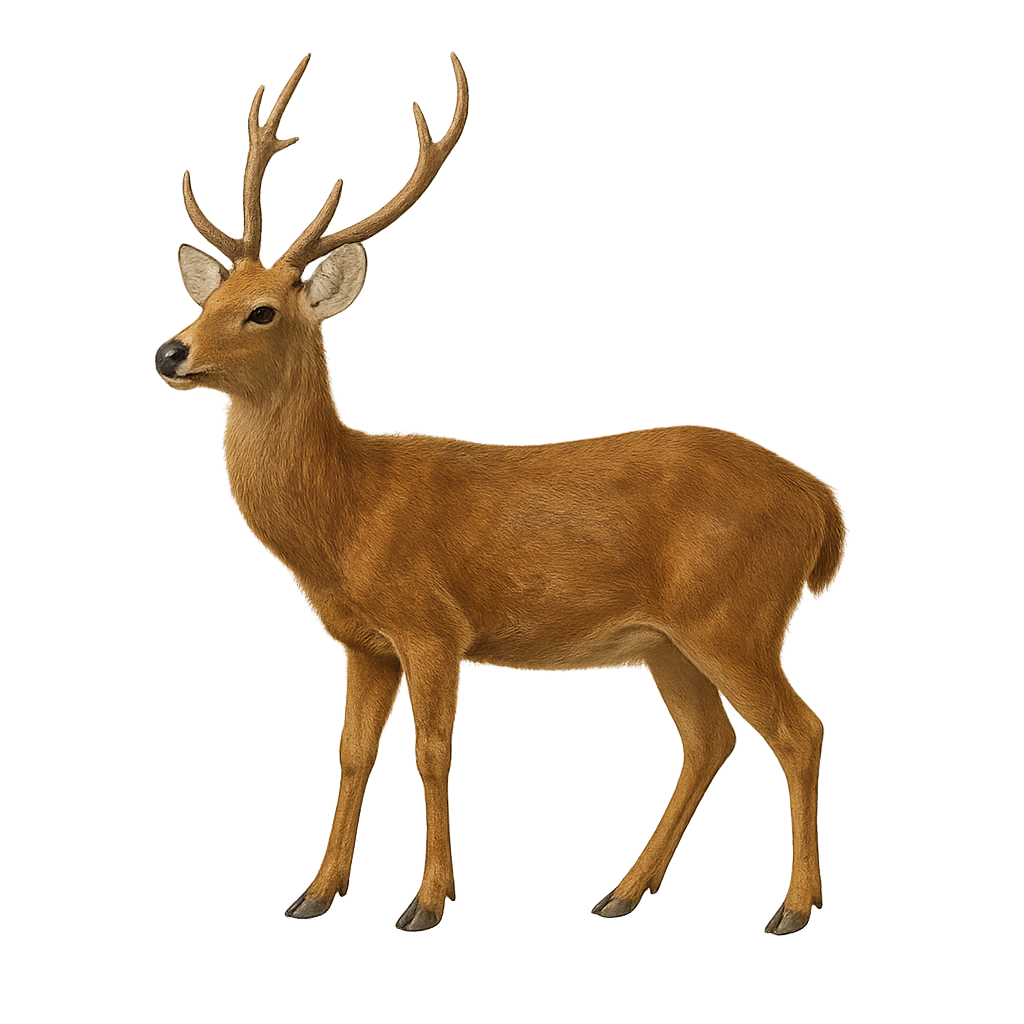Your wildlife photography guide.
Explore the swamp deer in detail, study its behavior, prepare your shots.
Where to observe and photograph the swamp deer in the wild
Learn where and when to spot the swamp deer in the wild, how to identify the species based on distinctive features, and what natural environments it inhabits. The WildlifePhotographer app offers tailored photography tips that reflect the swamp deer’s behavior, helping you capture better wildlife images. Explore the full species profile for key information including description, habitat, active periods, and approach techniques.
Swamp Deer
Scientific name: Rucervus duvaucelii

IUCN Status: Vulnerable
Family: CERVIDAE
Group: Mammals
Sensitivity to human approach: Suspicious
Minimum approach distance: 50 m
Rut period: September to October
Gestation: 240-250 jours
Births: May to June
Habitat:
Wetlands, marshes, flooded grasslands
Activity period :
Mainly active at night, generally discreet during the day.
Identification and description:
The Rucervus duvaucelii, commonly known as the barasingha or swamp deer, is a deer species native to the Indian subcontinent. It is recognizable by its impressive antlers, which can have up to twelve tines, hence its local name meaning "twelve-tined". This deer prefers wet and marshy areas, where it primarily feeds on aquatic grasses. Males are generally larger than females and have a golden-brown coat. The barasingha is a social species, living in herds that can number several dozen individuals. Unfortunately, it is threatened by habitat loss and illegal hunting, leading to a significant decline in its wild populations.
Recommended lens:
400 mm – adjust based on distance, desired framing (portrait or habitat), and approach conditions.
Photography tips:
To photograph the barasingha, it is advisable to use a telephoto lens of at least 400mm to capture detailed images without disturbing the animal. The best opportunities often arise early in the morning or late in the afternoon when the natural light is soft. Look for areas near water where these deer gather to drink or feed. Be patient and discreet, wearing neutral-colored clothing to blend into the environment.
The WildlifePhotographer App is coming soon!
Be the first to explore the best nature spots, track rutting seasons, log your observations, and observe more wildlife.
Already 1 430 wildlife lovers subscribed worldwide

